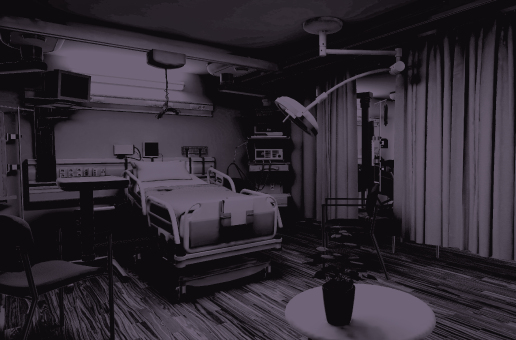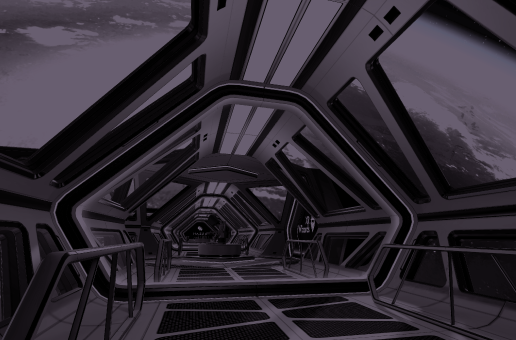Table of Contents:
Getting your kids excited about learning is usually quite a challenge. No matter if you send them to public or private school, keeping children focused can be a real nightmare. In a world driven by technology, it is often said that innovations and technological news lower the level of focus in both kids and teenagers. Smartphones, laptops, iPads – they steal time and keep kids from learning. But is this true? Are the latest technologies harmful to our children?
In fact, popular opinion might be wrong. Technology doesn’t have to be a distracting factor in education. Quite the opposite – VR in education can be both helpful and supportive, in large part because of its immersive aspect. With the emergence of virtual reality and augmented reality, distraction in education may no longer be a problem.
What is distraction in education?
Numerous studies from psychology and cognitive science have generated multiple pieces of evidence suggesting that multitasking while learning has a significant detrimental effect on student performance. Many experts have stated that technology has become a relevant distraction in education and that students’ results have gotten worse, mainly because of widespread internet access, mobile devices, and high-end technologies. It is of course true that distraction itself harms learning. Multiple negative outcomes occur because of students engaging in off-task multitasking. When attention is divided during the encoding process, the subsequent memory of what you worked on will be impaired. When you are distracted during learning, your brain processes and stores information in different, less useful ways. This results in knowledge that is much less easily extended and extrapolated to new contexts. So, is technology a distraction in education? What about VR in education and AR in education? Should teachers and professors be worried about the rapid development of these technologies?
Virtual reality and augmented reality – the differences
Let’s start with a quick explanation of what virtual reality and augmented reality are and what differences there are between them. Augmented reality is a fusion of the digital world and physical elements to create an artificial environment. The technology uses computer vision, mapping, and depth tracking to show appropriate content to the user. The user’s physical environment is enhanced with contextually relevant digital content in real-time. AR in education offers individualized learning and fosters the education process. It can be used to increase user knowledge and information. Virtual reality is a simulation of an alternate world or reality. It is often used in video games and 3D movies. The user utilizes computers and sensory devices to become fully immersed in a virtual world. To enter this world, the user needs to put a VR headset screen in front of their eyes so that interaction with the real world is eliminated. VR in education provides the user with immersive learning in an interactive environment and is quite convenient to use. Although VR and AR are quite similar, there are significant differences between them. Augmented reality uses a real-world setting and virtual reality is almost entirely virtual. AR can be accessed with a smartphone and VR usually requires a headset device. Finally, with AR, end-users are still in touch with the real world, while VR users are not.
AR and VR in education – how are they used?
Both AR and VR have been widely used in the education of numerous disciplines. Even if distraction while studying is considered, the effectiveness of such solutions has become impressive. The positive effects of AR and VR on learning include improved performance, increased engagement and motivation, and the fostering of collaboration among learners. Let’s explain more about how AR and VR can improve the quality of education for both children and adults.
VR and AR in early education
Virtual and augmented reality have already transformed the early education industry. Augmented reality can change the way kids interact with visual graphic experiences. For example, the technology is capable of segmenting computer-generated graphics into the real environment on the screen. It can make learning fun, exciting, and more interactive. Teachers can add gaming elements to entertain kids and help them learn something new. VR can also help youngsters get used to kindergarten or school. They can see objects in the classroom, for example the teacher, virtually. They can be taken to visit a park, a zoo, or any other environment to learn about the world. Early education is all about learning through experience, so VR and AR have a lot to offer here.
VR and AR in the classroom
Education is expected to be one of the largest sectors that will invest in VR and AR in the near future. Technologies like VR and AR increase engagement as they give pupils exciting new ways to interact with their environment. They make information memorable and at the same time, allow students to control the learning experience. Plus, they can be especially beneficial for teenagers who have various disabilities. The simplest example of VR in the classroom is the Street View feature on Google Maps, but there are many other applications. For example, learners can be transported to a different era to see history in ways that their imaginations might not be able to create when simply reading about them. Surprisingly, it turns out that VR helps teenagers focus, while AR is a great way to add additional layers to graphic visuals and presentations to make lectures and books more interactive and engaging
VR and AR for universities
Now that many students learn from home, keeping them engaged in lectures has become extremely difficult. Therefore, VR and AR in education have been enthusiastically adopted in more and more universities. AR allows students to gain knowledge through rich visuals and immersion in the subject matter. It can replace textbooks, physical media, and printed brochures. The gamification of AR can make students’ attitudes more positive. In addition, VR is perfect as an innovative tool for students. For example, it can enable medical students to understand anatomy better and to practice surgeries without compromising the health of living subjects.
VR and AR in professional training
Nowadays, when more and more tasks are easily automated, people, no matter their age, are often made to look for new career opportunities. In some cases, they must look for a job in a completely different industry or change what they specialize in. This can be difficult, especially if you have to switch to a more complicated position that requires many new things to be learned at once. VR and AR might provide solutions here. Instead of dozens of books and learning apps, you can use virtual and augmented reality to learn more quickly and effectively. This might increase your chances of successfully applying for a new position. There are also virtual internships and training courses that immerse the user in a virtual training room. Users can interact and learn as if they were physically in the chosen situation. This can significantly expand their career exploration.
Conclusion
As you can see, AR and VR in education, when handled properly, are nothing like a distraction. In fact, the learning process can be enhanced using these new technologies. However, it is important to make sure that you choose a reliable tool or platform when using VR or AR. One of the most advanced solutions available today is Mazer – a platform used to create extended reality spaces where students and teachers can meet to interact and cooperate. The platform was developed to supercharge the learning process at all levels of education. It makes learning easier by eliminating distractions and enabling full immersion for all students and teachers.
The platform is fully scalable – it works for both small teams and in large universities. It doesn’t have geographical barriers – you can easily connect with teachers from all over the world. Not only is Mazer effective, but it is also fully customizable. The immersive experience can be fully adjusted to your students’ needs, and you can easily modify the environment or adjust 3D tools and preplanned scenarios. Interested? Learn more about Mazer!
What is the impact of technology on students’ focus and learning?
Contrary to common belief, technology does not inherently distract students and hinder their learning. While it’s true that multitasking with devices can affect performance negatively, the use of innovative technologies such as Virtual Reality (VR) and Augmented Reality (AR) can actually enhance educational experiences. These technologies offer immersive learning environments that can increase engagement, improve retention, and make learning more interactive. Properly integrated into educational settings, VR and AR can transform traditional learning methods and counteract the distractions typically associated with smartphones and other devices.
How do Virtual Reality (VR) and Augmented Reality (AR) differ, and what unique benefits do they offer in education?
VR and AR are both cutting-edge technologies but differ significantly in their application and user experience. VR immerses users in a completely virtual environment, cutting off the real world and requiring devices like headsets for the full experience. It offers an immersive learning environment where students can explore virtual worlds or scenarios, making it particularly useful for simulating situations that are impractical or impossible in the real world.
How are AR and VR being used in different educational settings?
Both AR and VR technologies have found applications across all levels of education, from early childhood to university and professional training. In early education, AR can make learning more interactive and fun by integrating gaming elements, while VR can familiarize children with new environments in a safe and controlled manner. In classroom settings, these technologies can bring subjects to life, enhancing engagement and making information more memorable.
Unlock the future with Mazer: Your innovation partner.








